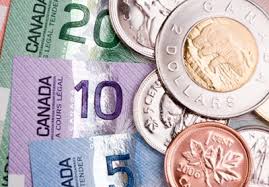Friday, 16 October 2015 03:54
 OTTAWA: The Canadian dollar hit its strongest level against the greenback in three months on Thursday, fueled by expectations that the Federal Reserve could delay raising US interest rates until next year.
OTTAWA: The Canadian dollar hit its strongest level against the greenback in three months on Thursday, fueled by expectations that the Federal Reserve could delay raising US interest rates until next year.
The gains saw the loonie extend a rally that has the currency up 3.5 percent so far this month. A raft of disappointing US data, worries about China’s economy and divided comments from Fed policymakers have raised doubts that the central bank will be able to start hiking rates before the end of 2015 as it had planned.
“The expectations of a December rate hike have been reduced, so that has helped the Canadian dollar and weakened the US dollar pretty much all around,” said Hosen Marjaee, senior managing director of Canadian fixed income at Manulife Asset Management.
A stabilization in the price of oil, a major export for Canada, has also helped the loonie gain ground. The currency has been highly sensitive to the drop in world oil prices over the past year.
The Canadian dollar is still down 10.5 percent against the greenback in the year to date, hurt by cheap oil and two rate cuts from the Bank of Canada.
The Canadian dollar ended the North American trading session at C$ 1.2847 to the greenback, or 77.84 US cents, firmer than the Bank of Canada’s official close on Wednesday of C$ 1.2922, or 77.39 US cents.
The currency’s strongest level of the session was C$ 1.2832, its highest level seen July 15. It had traded above C$ 1.30 for most of October, which had been a significant resistance level.
“If we can close this week around the levels we’re seeing today, beyond that C$ 1.2880, it definitely will help it to gain more traction,” said Ken Wills, CanadianForex’s Head of Corporate Foreign Exchange North America.
But he noted that the move has more to do with US dollar weakness than Canadian fundamentals.
The Canadian economy probably rebounded from a mild recession last quarter, helped by solid US demand for its exports, according to a Reuters poll, but the recovery was not seen as strong enough to warrant an interest rate rise until 2017.
Canadian government bond prices were lower across the maturity curve, with the two-year price down 3 Canadian cents to yield 0.537 percent and the benchmark 10-year falling 44 Canadian cents to yield 1.442 percent.
The Canada-US two-year bond spread was -6.40 basis points, while the 10-year spread was -57.6 basis points.




























